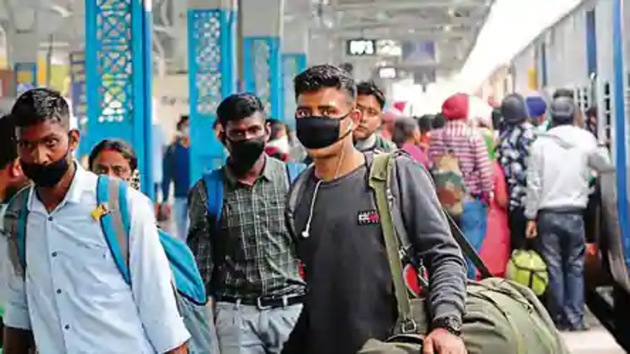Curbs on movement needed as travel hubs become Covid-19 hotspots
The government last week classified 170 districts, nearly a quarter of the country’s 731 districts, as Covid-19 hotspots. These include districts which have reported large outbreaks or multiple clusters of cases.
The 170 districts that the government identified last week as Covid-19 hotspots are home to seven in 10 people who migrate between states for reasons other than marriage, and nine in 10 of all domestic air passengers embark on their journeys from airports in these places, a Hindustan Times analysis showed, highlighting how containing these areas may be critical to India’s fight against the deadly pathogen.

These numbers can also explain the need for barring interstate travel – flights, trains and buses have not been allowed to carry passengers for nearly a month now and the government has indicated that transport may not be allowed to resume immediately after the nationwide lockdown ends on May 3 – to prevent the spread of the coronavirus disease.
The government last week classified 170 districts, nearly a quarter of the country’s 731 districts, as Covid-19 hotspots. These include districts which have reported large outbreaks or multiple clusters of cases.

Even though these hotspots comprise only about 23% of all districts, 29% of the country’s geographical area, and are home to about 37% of the country’s population, they have a relatively high share of migrant population. According to a Hindustan Times analysis of 2011 Census data, these hotspots were home to nearly 25 million people who have migrated from other states for reasons other than marriage. They make up an overwhelming 67% of all such interstate migrants in the country.
To be sure, this is a close approximation for present times because the population figures would have changed since the Census was last conducted, and some district boundaries have also changed since then.
Work, employment or business was a reason for migration for over a third of these 25 million migrants who live in these hotspots. About 2% migrated for educational purposes while the rest migrated for other reasons or with their families.
That the hotspot districts are home to a majority of migrants is understood by the fact that nearly half of the population in these districts live in urban areas. The hotspot districts put together have about 48% urban population compared to 21% in other districts combined.
This also makes non-agricultural economic activity more predominant in these districts. According to the Census figures, there were about 155 million full-time workers (or main workers) in the hotspot districts and only about 39% of them were cultivators or agricultural labourers. In contrast, nearly 59% of the 207 million full-time workers in other non-hotspot districts were cultivators or agricultural labourers.
Allowing interstate travel also means allowing a large number of these migrants to travel to all corners of the country, thereby risking spread of the coronavirus disease in places which have not reported the infections yet.
To be sure, it is not only the migrants who travel between states. These hotspots are also the hub of air travel in general. According to data from the Directorate General of Civil Aviation (DGCA) analysed by Hindustan Times, commercial airlines in India carried more than 123 million domestic passengers in the year 2017-18, of which 90% or nearly 111 million passengers embarked on their journeys from airports in the Covid-19 hotspots. Out of these 111 million people, more than 11 million, or 10%, travelled to airports in non-hotspot areas. Also, 92% of the 12 million passengers who began their journey from airports in non-hotspot regions travelled to airports in the hotspots.
All the eight cities that saw the highest number of outbound domestic passengers are now Covid-19 hotspots. These are Delhi, Mumbai, Bengaluru, Kolkata, Hyderabad, Chennai, Pune and Ahmedabad. Nearly 70% of all domestic air passengers began their journeys from one of these eight cities. Delhi and Mumbai are cities with the highest number of confirmed Covid-19 patients, and every one in three domestic air passengers begin their journeys from one of these two cities.
Indian Railways, on the other hand, is a large network with rail routes spanning 67,415 kilometres and 7,321 stations. Its non-suburban trains carried nearly 3.7 billion passengers in 2018-19, which is 10 million passengers a day on average. According to Indian Railways statistics, more than 80% of these passengers travelled in second-class train coaches, which are usually overcrowded and carry risk of spreading infections if footfalls are not strictly curtailed.
These figures explain why the government may find it difficult to resume interstate passenger transport services until proper measures to contain the clusters of outbreak are taken in the hotspot districts. A letter sent by the Union health secretary Preeti Sudan to district authorities on April 15 suggested that a hot spot district can be classified as a non-infected district only if no new case is detected for 28 days.






